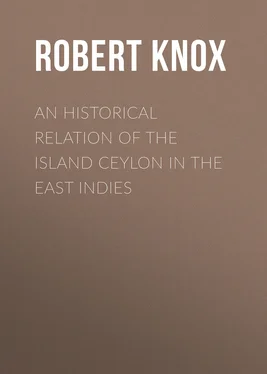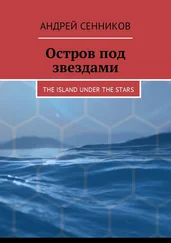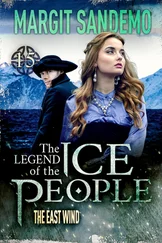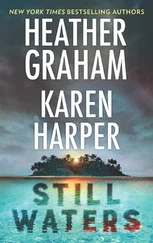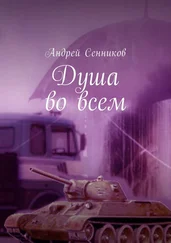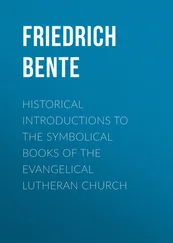Robert Knox - An Historical Relation of the Island Ceylon in the East Indies
Здесь есть возможность читать онлайн «Robert Knox - An Historical Relation of the Island Ceylon in the East Indies» — ознакомительный отрывок электронной книги совершенно бесплатно, а после прочтения отрывка купить полную версию. В некоторых случаях можно слушать аудио, скачать через торрент в формате fb2 и присутствует краткое содержание. Жанр: Путешествия и география, История, foreign_edu, foreign_antique, foreign_prose, на английском языке. Описание произведения, (предисловие) а так же отзывы посетителей доступны на портале библиотеки ЛибКат.
- Название:An Historical Relation of the Island Ceylon in the East Indies
- Автор:
- Жанр:
- Год:неизвестен
- ISBN:нет данных
- Рейтинг книги:5 / 5. Голосов: 1
-
Избранное:Добавить в избранное
- Отзывы:
-
Ваша оценка:
- 100
- 1
- 2
- 3
- 4
- 5
An Historical Relation of the Island Ceylon in the East Indies: краткое содержание, описание и аннотация
Предлагаем к чтению аннотацию, описание, краткое содержание или предисловие (зависит от того, что написал сам автор книги «An Historical Relation of the Island Ceylon in the East Indies»). Если вы не нашли необходимую информацию о книге — напишите в комментариях, мы постараемся отыскать её.
An Historical Relation of the Island Ceylon in the East Indies — читать онлайн ознакомительный отрывок
Ниже представлен текст книги, разбитый по страницам. Система сохранения места последней прочитанной страницы, позволяет с удобством читать онлайн бесплатно книгу «An Historical Relation of the Island Ceylon in the East Indies», без необходимости каждый раз заново искать на чём Вы остановились. Поставьте закладку, и сможете в любой момент перейти на страницу, на которой закончили чтение.
Интервал:
Закладка:
Ants of divers sorts.There are Ants of several sorts, and some worthy our remark.
First of all, there are the Coumbias , a sort of small reddish Ants like ours in England .
Secondly, the Tale-Coumbias , as small as the former but blackish. These usually live in hollow Trees or rotten Wood, and will sting most terribly.
Thirdly, the Dimbios , great red Ants . These make their nests upon the Boughs of great Trees, bringing the Leaves together in clusters, it may be as big as a mans head; in which they lay their Eggs and breed. There will be oftentimes many nests of these upon one Tree, insomuch that the people are afraid to go up to gather the Fruits lest they should be stung by them.
A fourth sort of Ants are those they call Coura-atch . They are great and black, living in the ground. Their daily practice is to bring up dirt out of the ground, making great hollow holes in the Earth, somewhat resembling Cony-Burrows ; onely these are less, and run strait downwards for some way, and then turn away into divers paths under ground. In many places of the Land there are so many of these holes, that Cattle are ready to break their Legs as they go. These do not sting.
A fifth is the Coddia . This Ant is of an excellent bright black, and as large as any of the former. They dwell always in the ground; and their usual practice is, to be travelling in great multitudes, but I do not know where they are going, nor what their business is; but they pass and repass some forwards and some backwards in great hast, seemingly as full of employment as People that pass along the Streets. These Ants will bite desperately, as bad as if a man were burnt with a coal of fire. But they are of a noble nature: for they will not begin; and you may stand by them, if you do not tread upon them nor disturb them. How these Coddia’s come to sting so terribly.The reason their bite is thus terribly painful is this; Formerly these Ants went to ask a Wife of the Noya , a venomous and noble kind of Snake; and because they had such an high spirit to dare to offer to be related to such a generous creature, they had this vertue bestowed upon them, that they should sting after this manner. And if they had obtained a Wife of the Noya , they should have had the priviledg to have stung full as bad as he. This is a currant Fable among the Chingulays . Tho undoubtedly they chiefly regard the wisedom that is concealed under this, and the rest of their Fables.
These Ants a very mischievous sort.There is a sixth sort called Vaeos . These are more numerous than any of the former. All the whole Earth doth swarm with them. They are of a middle size between the greatest and the least, the hinder part white, and the head red. They eat and devour all that they can come at; as besides food, Cloth, Wood, Thatch of Houses and every thing excepting Iron and Stone. So that the people cannot set any thing upon the ground within their houses for them. They creep up the walls of their houses, and build an Arch made of dirt over themselves all the way as they climb, be it never so high. And if this Arch or Vault chance to be broken, they all, how high soever they were, come back again to mend up the breach, which being finished they proceed forwards again, eating every thing they come at in their way. This Vermin does exceedingly annoy the Chingulays , insomuch that they are continually looking upon any thing they value, to see if any of these Vaeos have been at it. Which they may easily perceive by this Case of dirt, which they cannot go up any where without building as they go. And wheresoever this is seen, no doubt the Ants are there.
The curious Buildings of the Vaeos .In places where there are no houses, and they can eat nothing belonging to the people, they will raise great Hills like Butts , some four or five or six foot high; which are so hard and strong, that it would be work enough to dig them down with Pick-Axes. The Chingulays call these Humbosses . Within they are full of hollow Vaults and Arches where they dwell and breed, and their nests are much like to Honeycombs, full of eggs and young ones. These Humbosses are built with a pure refined Clay by the ingenious builders. The people use this Clay to make their Earthen Gods of, because it is so pure and fine.
The manner of their death.This sort of creatures as they increase in multitudes, so they dy in multitudes also. For when they come to maturity they have wings, and in the Evening after the going down of the Sun, (never before) all those that are fledged and ripe, will issue forth in such vast numbers, that they do almost darken the Sky, flying to such an height, as they go out of sight, and so keep flying till they fall down dead at last upon the Earth. The Birds that tarry up late, and are not yet gone to roost, fly among them and make good Suppers of them.
The People in this Land never feed their Poultry . But they feed upon these Ants , which by scraping among the leaves and dirt they can never want; and they delight in them above Rice or any thing else. Besides all these Ants already mentioned, there are divers other distinct sorts of them.
Bees of several kinds.But we will proceed to a more beneficial Insect, the Bee . Of which there be three sorts. The first are the Meemasses , which are the right English Bees . They build in hollow Trees, or hollow holes in the ground, which the Vaeo’s have made. Into which holes the men blow with their mouths, and the Bees presently fly out. And then they put in their hands, and pull out the Combs, which they put in Pots or Vessels, and carry away. They are not afraid of their stinging in the least, nor do they arm themselves with any cloths against them.
Bees that build on Trees like Birds.The second are the Bamburo’s , larger and of a brighter colour than our English Bees. Their Honey is thin like water comparatively. They make their Combs upon limbs of Trees, open and visible to the Eye, generally of a great height. At time of year whole Towns, forty or fifty in company together will go out into the Woods, and gather this honey, and come home laden with it for their use.
The third sort they call Connameia , signifying a blind Bee. They are small like a Fly, and black. They build in hollow Trees; and their honey somewhat tarrish: and they make such small quantities of it, that the people little regard it. The Boyes will sometimes cut a hole and take it out.
The people eat the Bees, as well as their honey.When they meet with any swarms of Bees hanging on any Tree, they will hold Torches under to make them drop; and so catch them and carry them home. Which they boyl and eat, and esteem excellent food.
Leaches that ly in the grass, and creep on Travellers Legs.There is a sort of Leaches of the nature of ours, onely differing in colour and bigness. For they are of a dark reddish colour like the skin of Bacon, and as big as a Goose quill, in length some two or three inches. At first, when they are young, they are no bigger than a horse hair, so that they can scarce be seen. In dry weather none of them appear, but immediately upon the fall of Rains, the Grass and Woods are full of them. These Leaches seize upon the Legs of Travellers; who going barefoot according to the custom of that Land, have them hanging upon their Legs in multitudes, which suck their blood till their bellies are full, and then drop off. They come in such quantities, that the people cannot pull them off so fast as they crawl on. The blood runs pouring down their Legs all the way they go, and ’tis no little smart neither, so that they would willingly be without them if they could, especially those that have sores on their Legs; for they all gather to the sore.
Читать дальшеИнтервал:
Закладка:
Похожие книги на «An Historical Relation of the Island Ceylon in the East Indies»
Представляем Вашему вниманию похожие книги на «An Historical Relation of the Island Ceylon in the East Indies» списком для выбора. Мы отобрали схожую по названию и смыслу литературу в надежде предоставить читателям больше вариантов отыскать новые, интересные, ещё непрочитанные произведения.
Обсуждение, отзывы о книге «An Historical Relation of the Island Ceylon in the East Indies» и просто собственные мнения читателей. Оставьте ваши комментарии, напишите, что Вы думаете о произведении, его смысле или главных героях. Укажите что конкретно понравилось, а что нет, и почему Вы так считаете.
